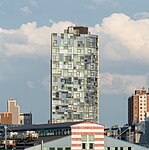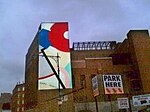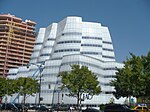Chelsea Piers

Chelsea Piers is a series of piers in Chelsea, on the West Side of Manhattan in New York City. Located to the west of the West Side Highway (Eleventh Avenue) and Hudson River Park and to the east of the Hudson River, they were originally a passenger ship terminal in the early 1900s that was used by the RMS Lusitania and was the destination of the RMS Carpathia after rescuing the survivors of the RMS Titanic. The piers replaced a variety of run-down waterfront structures with a row of grand buildings embellished with pink granite facades.The piers are currently used by the Chelsea Piers Sports & Entertainment Complex. The Complex is a 28-acre waterfront sports village located between 17th and 23rd Streets along Manhattan's Hudson River. This privately financed project opened in 1995. Situated on Piers 59, 60 and 61 and in the head house that connects them, the complex features the Golf Club, a multi-story driving range; the Field House, which contains numerous sports and training facilities; Sky Rink, which has two full-sized ice rinks; the Chelsea Piers Fitness health club; Bowlero at Chelsea Piers, a bowling alley; and Sunset Terrace, a venue that hosts weddings and other events. The complex also includes several event centers; the Studios film and television production facilities; and the Maritime Center marina for mooring private boats.
Excerpt from the Wikipedia article Chelsea Piers (License: CC BY-SA 3.0, Authors, Images).Chelsea Piers
11th Avenue, New York Manhattan
Geographical coordinates (GPS) Address Website External links Nearby Places Show on map
Geographical coordinates (GPS)
| Latitude | Longitude |
|---|---|
| N 40.747222222222 ° | E -74.009722222222 ° |
Address
Chelsea Piers
11th Avenue
10011 New York, Manhattan
New York, United States
Open on Google Maps







